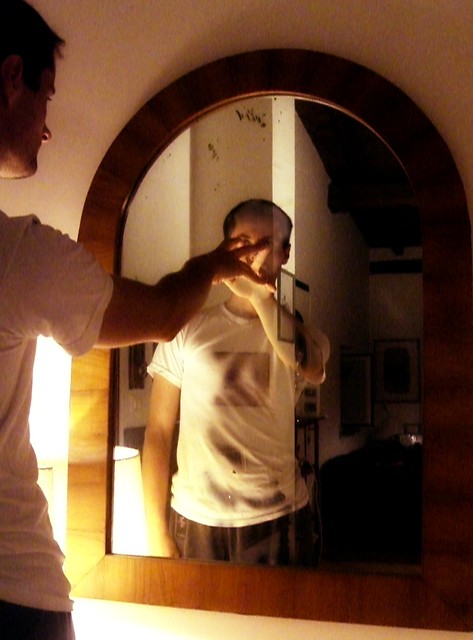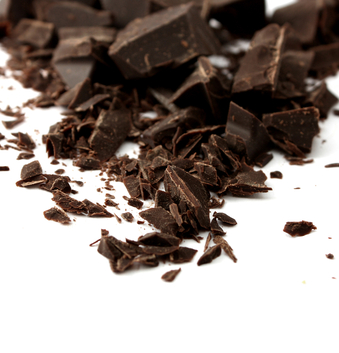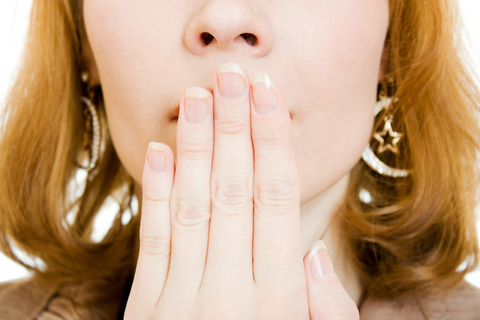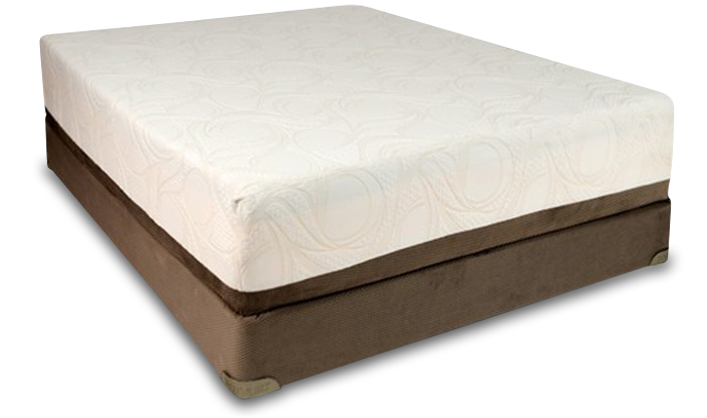Gaining weight at the speed of (night) light
“Bodies have their own light which they consume to live: they burn, they are not lit from the outside.”
― Egon Schiele
There are those of us who crave the light. And those who crave the darkness. Yet, disrupting the yin/yang that exists between the balance that defines the framework for these differences can wreak significant havoc on the body. In a review published online this week in Endocrine Reviews, Ohio State researchers have examined the effects of night light on the body’s circadian clock. And the results are not pretty.
Obesity has become a global problem and in the U.S. alone, numbers of people who qualify as obese (BMI>50) increased by as much as 75% between the years 2000 and 2005. Concurrent with this change has been the explosion in the use of electric light at night, which has bolstered the ability to self set the sleep/wake cycle. And while economically, this may be an attractive proposition, light at the wrong time of day, that is, light that disrupts the body’s natural circadian rhythm can lead to cancer, disrupt sleep, interfere with mood, impair cognition and perhaps most importantly, interfere with the metabolism. Data show that the increase in exposure to light tracks pretty closely to the eruption of global obesity and metabolic disorders. Moreover, even dim light (think: light from mobile devices) has been shown to alter circadian genes, especially those involved in nutrition and metabolism, affecting hunger and appetite. More troubling is the fact that the researchers say that this disruption is reciprocal, so, while interfering with the body’s circadian rhythm can lead to obesity, the metabolic changes that results in turn, alter circadian rhythms. This endless loop may be a key reason why so many of us are gaining weight. Other key factors include disruption in melatonin levels (which affects sleep pattern) and cortisol levels (related to stress), and unfortunately, these changes can occur through exposure to low light levels at the wrong time of day.
For all intent and purposes, modern society is a 24 hour society. Researchers say that over 99% of the US and Europe is exposed to urban light pollution and many people bring light into their homes at night, watch TV late night and use computers just prior to and in bed. They add that two-thirds of the population experience social ‘jet lag,’ a term coined to describe the habit of following different sleep schedules on the weekdays and weekends. And, the issue is an environmental one as well; the health of plants and animal species are affected by artificial light at night.
The solution may be to start to bring back the dark . Use black out curtains or shades, turn off hallway lights and keep the computers and phones out of the bedroom. Try to maintain a regular sleep schedule. And be mindful of when and how often you are eating at ‘irregular hours.’ Mostly, however, pay attention to your habits and see what changes can be made. There are many factors that contribute to obesity but it appears that for many of us, one of the most important might be nighttime light exposure.
As Schiele so aptly points out, we have our own light that does not require outside illumination, at least not at certain times of the 24 hour period that makes up a healthy, balanced life.
Read More
Mirror, mirror, on Guyside’s wall…
 I recently came upon a photo of me that was about 10 years old or so. I didn’t think much of it, but then I took a closer look to see if I could spot the telltale signs of aging in it. It was hard. I’m a little heavier now than I was then (about 192 compared to about 185); there are more than a few gray hairs in my facial hair, but not much on top; I couldn’t see the advance of wrinkles.
I recently came upon a photo of me that was about 10 years old or so. I didn’t think much of it, but then I took a closer look to see if I could spot the telltale signs of aging in it. It was hard. I’m a little heavier now than I was then (about 192 compared to about 185); there are more than a few gray hairs in my facial hair, but not much on top; I couldn’t see the advance of wrinkles.
Trust me. I am not Dorian Gray. But I think that guys are able to see exactly what they want to see in mirrors or photographs. A classic Canadian folk song called “Lies” is about a woman confronting her face in the mirror, with one couplet: “She shakes off the bitter web she wove / Gently puts the mirror face down by the stove.” From the outside, at least, I think women look at themselves and see flaws, while men look at themselves and see an idealized version of themselves.
I don’t think I have to argue that for many women, body image is a big problem. But I want to argue that the male tendency to ignore reality isn’t an asset. If we “can’t see” the toll that time and our choices take on our body, then men could be opening ourselves up to health issues.
I was recently part of an online discussion where a mother was talking about how quickly her daughter would look at herself and wonder if she was too fat (this in elementary school!), while the girl’s quite-average-shaped younger brother would come to his mother and demand she demonstrate awe at his huge biceps and muscles! While I suspect that everyone in adolescence is hypersensitive to body issues (why don’t my boobs look like hers, why can’t I get rid of these pimples, why am I 6’1″ and weigh under 140 — that last one was me, by the way), it’s disconcerting to think that even in early childhood, there are already seeds of dissatisfaction with who we are, and the willingness to rely on our fantasy vision of ourselves rather than to simply acknowledge reality.
Since the 1980s, when I was thin enough, as my dad used to say, “to have to run around in the shower to get wet,” I’ve put on about 55 pounds. I needed some of that. But maybe not all of that. Even my idealized eyes can see that. I’ll never be a bodybuilder, never be “musclebound.” Given the raw material, I would have to either become an utter gym rat, or I’d end up using dangerous methods like steroids to achieve some level of muscularity. And I’m not willing to risk my health for an image. I like feeling fit, I like feeling toned. But for me, the “Men’s Health” six-pack or the arms of a pro wrestler aren’t worth it.
But the question then becomes: if you recognize the need for change, then how to make that change. Next week, I’ll be talking about cosmetic surgery for men.
(photo CC-licenced by Flickr user Michele di Trani)
Read MoreMajority rule? Time to express yourself
Do women have an equal voice in groups?
Apparently the answer is no, especially when men comprise the majority at the table. And while this may appear to be trivial, it speaks volumes about what happens when men and women are part of important deliberating bodies, such as Advisory Boards or even political bodies. Who’s influencing whom, for example? Moreover, what can be done about?
I published this post a few years back and all the press about Sheryl Sandberg’s ‘Ban Bossy’ has me thinking that she may have a point. And while I do realize that there are distinctions between leading and being assertive (a point that some might argue the Ban Bossy advocates are missing), what is true is that taking the backseat can be a costly proposition.
Writing in the American Political Science Review, Assistant Professor of Political Science (Brigham Young) Christopher Karpowitz suggests that while more than 100 countries have mandated a 30% minimum quota for women on governing or political bodies, their voices are still not being heard and gender inequality is the rule, not the exception. Yet, the reason for this may be more complicated than at first glance; it seems that women don’t always speak up when given the opportunity. Toward that end, Karpowitz adds that “girls and boys are socialized to different gendered cultures of interaction and they carry these implicit scripts of behavior with them into adulthood.” Consequently, in a meeting where men dominate in number, they may also dominate in voice as the dynamic in the room shifts towards assertion, competition and dominance versus a spirit that is often considered feminine, i.e. cooperation, intimacy and inclusion.
Karpowitz and his colleagues point out that this paradigm of exclusion actually shifts when groups must come up with an unanimous decision. In fact, when the researchers challenged 94 groups of men and women to discuss the best way to distribute money that they theoretically earned together, they found that In the majority of cases and regardless of how proportioned the gender make up was, women spoke less than 75% of the time that their male peers spoke. When they were the minority, women consistently spoke less and were perceived as less influential by the group. However a shift took place when the majority rule was thrown out the window.
There’s an old say that ‘time is money.’ In the case of decision making, it appears that how many timse one voices one opinion is more important than how many opportunities one is provided with to do so. The underlying rule of thumb is that the rules are more stringent and the outcomes have a greater stake. If you wish to play a role, speak up. It’s essential, not only for equality but also, because women bring “unique and helpful perspectives to [issues] under discussion.” Karpowitz points out what many of us intuitively know: “We’re not just losing the voice of someone who would say the same things as everybody else in the conversation.”
Read More
Friday NewsFlash: more loco for cocoa, the ‘why’s’ have it!
 Guess what? Research presented at this week’s American Chemical Society Meeting in Dallas appears to demonstrate the reasons why dark chocolate might be good for your health: microbes in your gut.
Guess what? Research presented at this week’s American Chemical Society Meeting in Dallas appears to demonstrate the reasons why dark chocolate might be good for your health: microbes in your gut.
Like many writers, I’ve been reporting on chocolate for some time now and yet, while theories have focused on flavanols, neither cause and effect, or the exact reasons for benefits have been clear. However, Lousiana State University scientists say that good microbes in your gut – lactic acid and a type knowns Bifedobacterium – actually breakdown the antioxidant properties in cocoa (e.g. cathechin and epicatechin), ferment it and produce smaller molecules that are anti-inflammatory. In other words, they are believed to help reverse the body’s low-grade inflammation that leads to heart attack, stroke and other heart-related conditions. The discovery came when the scientists exposed three different cocoa powders to simulated digestion and then fermented the non-digestable materials.
Another related finding is that when prebiotics — carbohydrates that are found in foods like raw garlic or cooked whole wheat flour — are combined with cocoa, namely the small amount of fiber in cocoa, they become like worker bees to further help break down the antioxidant compounds.
Now that we have the why, let’s hope that researchers confirm an actual cause and effect. Right now, they can only confirm an association. But having your dark chocolate and eating it too may be one of the best things you can do for your heart health, at least, in moderation.
Read MoreGuyside: “Engage” isn’t just for Captain Picard

Ian McKellen and Patrick Stewart may be appearing together in “Waiting for Godot” in New York, but even a Google search for their names will quickly give you the sense that they are great friends. (photo: BBC)
I had a feeling, but there’s data to support my gut: the demographic group with the smallest network of friends is… me. The adult, straight, white dude. I’m probably an outlier in that sense: I have a lot of people who I’m proud to call friends, some of whom are very close friends indeed.
But it appears that guys like me are in need of social engagement, and not just because we look weird sitting at the bar with a beer and a plate of chicken wings, alone. Actually, that sort of engagement — beer, food, a sporting event- – is often called “shoulder-to-shoulder” friendship. The counterpart to that is “face-to-face” friendship, and the big-brained folks who study such things suggest that women tend to have more face-to-face friends. F2F friends share more information about their lives, their emotions, and they derive more benefit from the friendship than do the friends who go to a concert or a movie together and may rarely talk about what’s happening in their lives.
I’ve come home from evenings out with a friend and had my partner ask “so, what’s new with George?” and be at a loss to tell her anything significant.
But the benefits of real friendship are as real as the friendship itself. A 2010 journal article makes the point that social isolation is one of the first things used to punish or torture, and that social engagement can halve the risk of death.
So let’s say you’re an aging guy, and you just don’t have friends you can realistically take from shoulder-to-shoulder to face-to-face. What to do?
Perhaps you should think about finding a volunteer activity. I tend to be a bit of an overachiever in this area; I say yes to way too many volunteer activities. Right now, for example, I’m on the production team for a major fundraising event for a choral festival, I’m raising money for a fundraising bicycle ride (BTW: DONATE!), I do a monthly radio piece on the history of folk music for a local community radio station, I’m part of a monthly ukulele get-together (you haven’t lived until you’ve been at a bar with 100 ukes!), I’m a sometime contributor to a local arts and culture web magazine, my partner and I do house concerts every month or so, I do this column, and I’m hatching a plan with friends to change the way chemotherapy drug costs are covered in my home province. That’s probably too much. But not all of it happens all the time, and I can always practice that “saying no” thing I’ve heard so much about.
All of those things expose me to new people and deepen my relationships with people over time (I’ve been involved with the Show Tune Showdown for 8 years). And volunteer activities have their own beneficial effects. A Canadian government report details the many benefits of volunteering for seniors:
- Building new relationships
- Sense of contribution to the local community
- Learning and practicing new skills that can be applied to other things
- Learning about new subjects
Even though that report is focused on seniors, I think the benefits extend down to someone of my tender years — or yours.
Read MoreDoes your mattress act as a tonic for rest?
When it comes to sleep, which of the following are most important to you?
- Great sheets
- A perfect pillow
- A dark room
- A light room
- No sound
- Sound
- Temperature
- Mattress
I’ve always gravitated toward a great mattress, a dark room and no sound. However, I’ve noticed of late that perimenopause is making me hot, really hot at really inconvenient times. So I was intrigued when I saw an image on my Facebook stream a few weeks ago posted by a friend who works as a brand engineer for Restonic Mattress Corporation. Granted, I haven’t a clue if a brand engineer is the same as a branding expert what I do know is that sleep is critical and that the claims about the mattress appeared to address some of my recent concerns considering sleep, or lack thereof.
The new Restonic mattress is made of memory foam and my impression is that memory foam is ‘hot,’ too hot for individuals who tend to run hot as a rule. And yet, the TempaGel® is being touted as being especially temperature friendly. The specs point out that the memory foam closest to the surface is ‘gel-infused’ which serves to wick heat away from the body, thereby reducing temperature fluctuations. And, it claims to incorporate a technology (Outlast®, used by NASA as well as other brands, that keeps the the bed temperature-neutral. The bed’s core is pre-compressed, which allows it to improve air circulation, again with the goal of reducing temperature fluctations. Moreover, the edge of the mattress is ventilated, which theoretically increases its sleepable surface (although I don’t know many ‘edge’ sleepers).
The general price point of Restonic mattresses appears comparable to other sleep brands that offer higher end mattresses however, I don’t know the exact price for the TempaGel. And while I have never been particularly interested in memory foam for a sleep surface, I’m intrigued.
As you are probably aware, sleep issues are pervasive as we age and in women, as they go through menopause. And, whether its stress or hot flashes or a medical condition, the result — less than 6 to 8 hours of uninterrupted sleep — can greatly interfere with daily functioning, mood and physical health.
What are you doing to reverse your sleep woes? How important is your mattress? And what are you sleeping on? More importantly, are you sleep habits fueling or cooling your inner and outer furnaces? Inquiring minds…
Read MoreBad mood. Bad food. Happy means healthy
Wow, I simply love the theme of this message. Study findings suggest that positive thinking can lead to healthier eating.
Consider this (which, I know to be true for me):
When you’re in a negative mood from stress, anxiety, frustration or even boredom, you may be more inclined to reach for comfort in the form of sweet and fat-rich foods. Not only do these types of food provide instant gratification but they have also been shown to trigger the release of insulin and endorphins to counteract the negativity (which of course, often returns in spades of guilt). So, researchers set out to understand the “why”underlying the association between bad moods and bad foods.
First, they looked at how a positive mood would actually influence the way that people perceived healthy foods (e.g. granola bars/candy bars, apples/cookies and rice cakes/potato chiops), with results indicating that people in positive moods tended to focus on long-term benefits like health, nutrition and future well-being. This was further supported by university students, whose moods were first manipulated for good or bad and who were then asked about their perceptions; as expected, the students who were in good moods liked the idea of healthy foods and staying healthy in their old age while those in worse moods tended to have less interest in health and more in indulging.
In a third experiment, the researchers once again manipulated moods and then presented the participants with plates of raisins and M&Ms, measured how much they consumed of each and then asked them how much they liked the snacks, how tasty and/or healthy they were and how enjoyable they were. Not only did people in bad moods eat roughly 20% more M&Ms, but there was a temporal aspect to the healthy versus indulgent behavior. Being in a bad mood tended to mean that there was a greater focus on the present (instant gratification) versus the future (weight gain) such that the ratio of M&Ms versus raisins eaten among present-focused participants.
Finally, it also appears that thinking about the future tends to lead to a greater consideration of more abstract benefits of the foods we eat (e.g. health, nutrition) and consequently, helps us make better food choices. However, even more important is that this temporal, present versus future consideration, can even modify our choices, even if we are in foul moods. And if we are in a bad mood? Well, researchers suggest trying to divert attention away from the urge to find gratification in bad foods and shift it to another activity that can brighten things a bit, activities like watching a movie or talking to a friend or listening to music.
The next time the urge hits? Pay attention to your mood, shift your focus and think about the future. Bad mood? Bad food!
Read More








